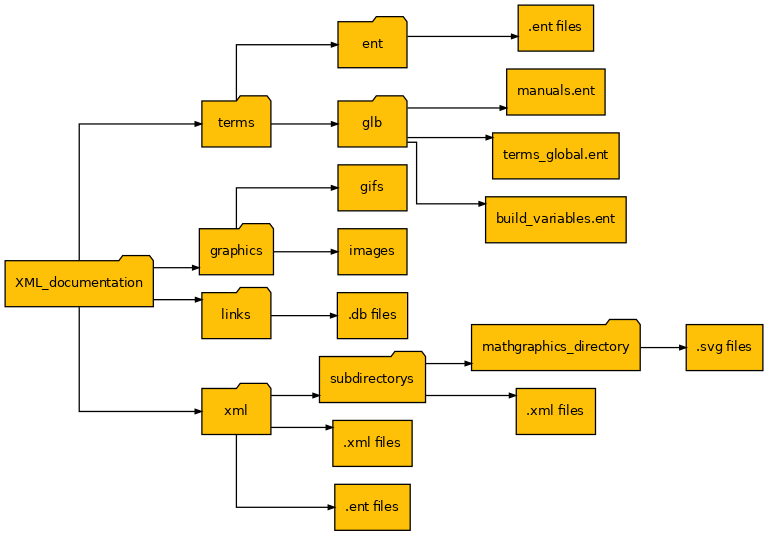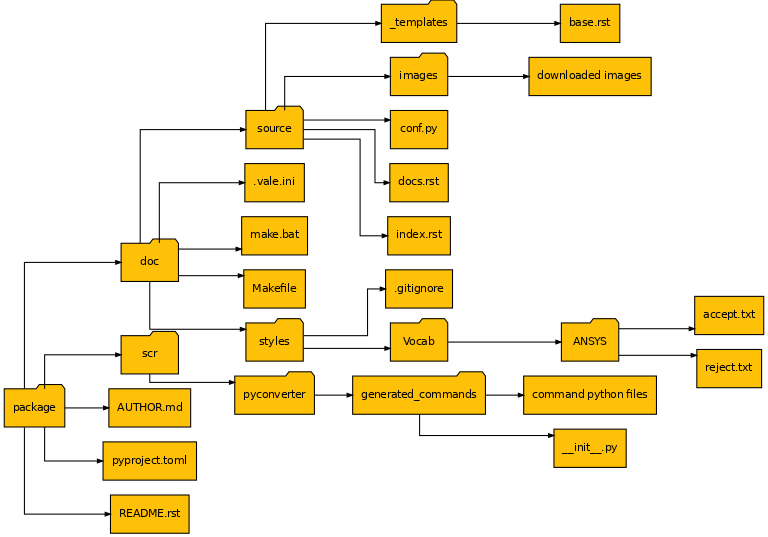User guide#
This section provides some guidelines for using PyConverter-XML2Py. You can modify each step as needed to convert your own Docbook XML documentation.
Predefined format#
The conversion is based on a predefined XML directory format that you should follow:

Predefined XML directory format#
Template directory#
The _package directory is the template that the autogenerated package
follows.
Convert an XML directory#
Once the XML_directory is correctly organized, you can use this command
to run the converter:
pyconverter-xml2py package -x XML_directory_path
If you need to customize some functions, you can specify the path containing the Python files:
pyconverter-xml2py package -x XML_directory_path -f customized_function_directory_path
For more information, see Source code generation.
After the converter runs, you can generate Sphinx documentation. This code renders the documentation as HTML from Windows:
cd package
pip install -e .[doc] # The use of a virtual environment is recommended.
.\doc\make.bat html
Autogenerated package#
The Sphinx documentation is contained in the autogenerated package
directory by default. This diagram presents the format of the
package directory:

Autogenerated package format#
